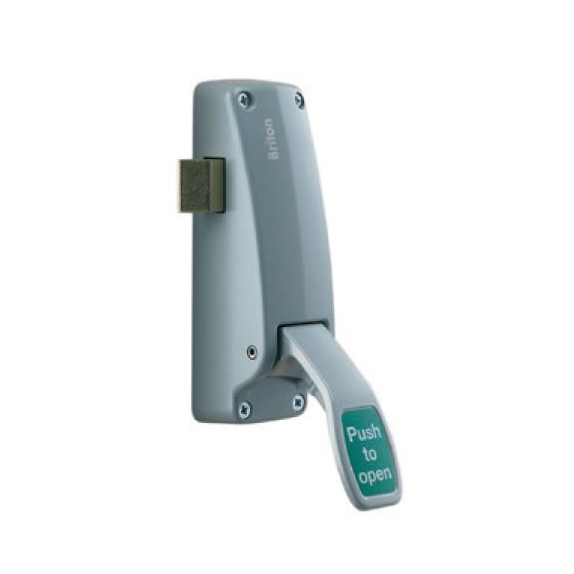Although my role as Manager, Codes & Resources for Allegion focuses on the model codes and referenced standards widely used in the United States, I periodically receive questions about European standards. Because iDigHardware’s international readership is growing, I began sharing information from our international team a few months ago.
The information below is the second post in a series on the EN standards for hardware, and was sent by Hamza Ali DHT and Sushil Kumar Dip GAI, both of Allegion.
~~~
In North America we have ANSI/BHMA standards which confirm the size, quality, material, etc., for the door hardware products. Similarly in Europe and UK we have EN classifications for the door hardware (Ironmongery). This standard and classification guarantees that the products meet a certain criterion with regards to cycle test, load bearing capacity, corrosion resistance etc. We would like to bring to the notice of architects and contractors to look for products which conform to and bear the EN Classification for durability and performance of the product on their projects.
EN 179: Emergency exit device.
This standard covers the device to be used in emergency situations where people are familiar with the emergency exit and know its operation, therefore a panic situation is most unlikely to develop. This involves devices operated by a lever handle or push pad. Architects and building owners should take notice of this standard as some manufacturers and suppliers are supplying and installing devices that do not carry any EN classification marks on critical emergency exit doors. These devices without markings and approvals may fail in case of emergency situations, and my also be less durable than EN classified products.
Classification to EN 179 – 3 7 6 B 1 3 4 2 B A
EN 1125: Panic exit device.
Experience relating to escape from buildings and general safety have made it desirable that doors at final exits in public buildings, places of entertainment, shops, etc. should be fitted with panic devices operated by a horizontal bar. The emphasis for products covered by this standard is on safe exit rather than security.
Classification to EN 1125 – 3 7 7 B 1 4 2 2 B A
Classifications
BS EN 1125 and BS EN 179 classify panic and emergency exit devices by using a 10-digit coding system. A similar classification applies to all building hardware product standards so that complementary items of hardware can be specified to, for instance, a common level of corrosion resistance, category of use, etc. Each digit refers to a particular feature of the product measured against the standard’s performance requirements.
The DHF (Door Hardware Federation UK) recommends the use of graphic icons to enhance clarity of information and has devised a system to facilitate assimilation of the various product classifications. Each feature within the product classification code is represented by an icon comprising four elements; Symbol, Grade/Type, Range/Options and Box.
![]() This icon is for a product which meets Grade 3 in the category of use classification, where EN 1125 and EN 179 stipulate only grade 3.
This icon is for a product which meets Grade 3 in the category of use classification, where EN 1125 and EN 179 stipulate only grade 3.
Explanation of each Digit:
Only one category is identified:
- Grade 3: High frequency of use by public and others with little incentive to exercise care
Two categories of durability are defined:
- Grade 6: 100,000 cycles
- Grade 7: 200,000 cycles
![]() Digit 3 – Door mass and Closing Force
Digit 3 – Door mass and Closing Force
Three categories of test door mass are identified:
- Grade 5: up to 100 kg
- Grade 6: up to 200 kg
- Grade 7: over 200 kg
Three categories of fire door resistance are identified:
- Grade 0: Not approved for use on fire/smoke door assemblies.
- Grade A: Suitable for use on smoke door assemblies, subject to satisfactory assessment of the contribution of the panic/emergency device to the smoke resistance of specified smoke door assemblies
- Grade B: Suitable for use on fire/smoke door assemblies, subject to satisfactory assessment of the contribution of the panic/emergency device to the fire resistance of specified fire/smoke door assemblies
- Such assessments are outside the scope of this European standard (see EN 1634-1)
All panic and emergency devices have a critical safety function therefore only the top Grade – 1 – is identified.
![]() Digit 6 – Corrosion resistance
Digit 6 – Corrosion resistance
Two grades of corrosion resistance are identified according to EN 1670:
- Grade 3: high resistance (96 salt spray hours)
- Grade 4: very high resistance (240 salt spray hours)
Products covered by BS EN 179 have 4 identified categories and generally have the opportunity of greater security against forced opening than devices covered by BS EN 1125.
BS EN 179
- Grade 2: 1,000 N
- Grade 3: 2,000 N
- Grade 4: 3,000 N
- Grade 5: 5,000 N
![]() Digit 8 – Projection of device.
Digit 8 – Projection of device.
Two grades are identified relating to the projection of the device from the door face:
- Grade 1: projection up to 150 mm (large projection)
- Grade 2: projection up to 100 mm (standard projection)
Two categories are identified for each standard:
BS EN 179
- Type A: emergency device with lever handle operation
- Type B: emergency device with push or pull pad operation
BS EN 1125
- Type A: panic device with push bar operation
- Type B: panic device with touch bar operation
![]() Digit 10 – Field of Application
Digit 10 – Field of Application
EN179
- A: outward opening
Single & double exit doors; active & inactive leaf
- B: outward opening
Single exit door only
- C: outward opening
Double exit door; inactive door
- D: inward opening
Single exit only
EN1125
- A: outward opening
Single & double exit doors; active & inactive leaf
- B: outward opening
Single exit door only
- C: outward opening
Double exit door; inactive door
Example:
The following marking denotes a panic exit device tested to 200,000 operations for a door mass up to 200kg, suitable for fire door use with very high corrosion resistance with standard bar projection for use on single & double doors.
References:
- dhf Best Practice Guide: Panic and Emergency Exit Devices
- Briton Exit Hardware Classifications Guide
- EN 179, EN 1125
You need to login or register to bookmark/favorite this content.
















I find North American Codes and standards more practical, functional, close to real world situations, easy to understand and apply. I think it is just because Europe is an amalgamation of several countries, languages and traditions that its standard have to be more descriptive for each culture to adapt.